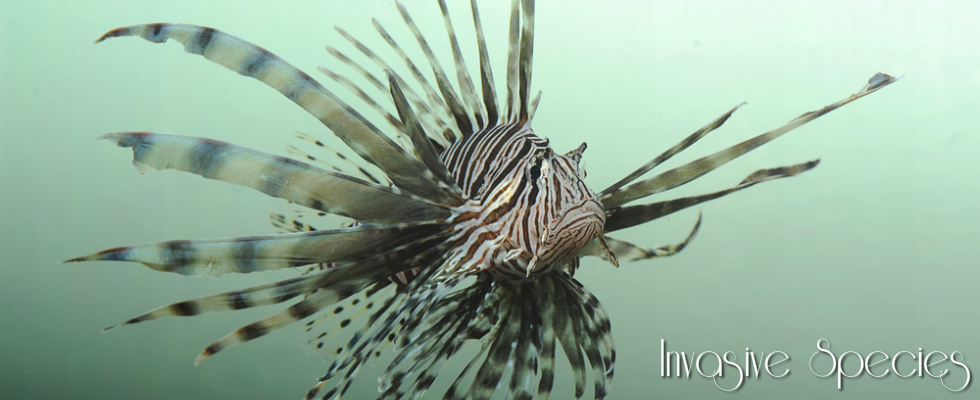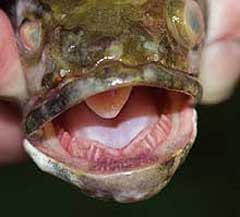
Invasive Species
Lionfish The Indo-Pacific lionfish, which has become widely established along the Southeast U.S. and Caribbean, has a diet consisting of over 40 species of fish and crustacean species which is making this invasive species a real threat to many native reef fish populations through direct predation as well as competition for food resources. According to ANS Taskforce, "Researchers have reported that within a short period after lionfish are introduced into a new area, survival of native reef fishes declines by about 80 percent. Further, the voracious feeding behavior of the lionfish may impact the abundance of ecologically important species such as parrotfish and other herbivorous fishes that keep seaweeds and macroalgae from overgrowing corals." Lionfish can permanently impact coral reef conservation measures and economically important species, such as snapper and grouper. Photo: Paula Whitfield/NOAA
Asian Carp After their introduction into the U.S., Asian carp spread quickly, became very abundant and hurt native fish by consuming immense amounts of food or damaging the marine habitat by reducing water quality and uprooting or consuming aquatic vegetation. According to the USDA, "Scientists fear that an Asian carp invasion into the Great Lakes could devastate the region's $7 billion sport and commercial fishery." Asian carp can be found in the Mississippi River drainage basin and Illinois River, however, they have spread or have been introduced legally or illegally into nearly every state in the U.S. and due to their large size and rapid rate of reproduction, they pose a serious threat to the Great Lakes ecosystem. Photo: USGS, FISC
Burmese Python The Burmese python, which is among the largest snakes in the world reaching up to 26 feet in length, was imported to the U.S. for the pet trade. When these animals escaped or were intentionally released into the ecosystem, wild populations became established. The Burmese python competes with and preys on native species, some of which are endangered, and has become one of the top predators in the Florida Everglades National Park, with a population between 30,000 and 100,000 snakes, posing a threat to many of the indigenous and endangered species there. Photo: USFWS/Southeast, Flickr
"Many species introduced into new environments are unable to survive in their new surroundings. However, a percentage of these species are able to expand the area they infest and negatively impact the economy, human health or ecology of a region and are termed invasive. Habitat alteration and invasive species impacts have been the major cause of species extinctions over the past few hundred years, increasing the rate of extinction by about 1,000 percent. Although in the past, many of these losses have gone unrecorded, today, there is an increasing realization of the ecological costs of biological invasion in terms of irretrievable loss of native biodiversity and degradation of ecosystem functioning. While the underlying causes of invasive species threats are significant and global in nature, these threats can be effectively dealt with through collaborative efforts at regional and local levels, especially through prevention, early detection and rapid response." ~ Invasive Species Specialist GroupAquatic Invasive Species Overview View 100 of the World's Worst Invasive Alien Species NOAA: Aquatic Invasive Species – Quick Facts U.S. FWS: The Cost of Invasive Species







